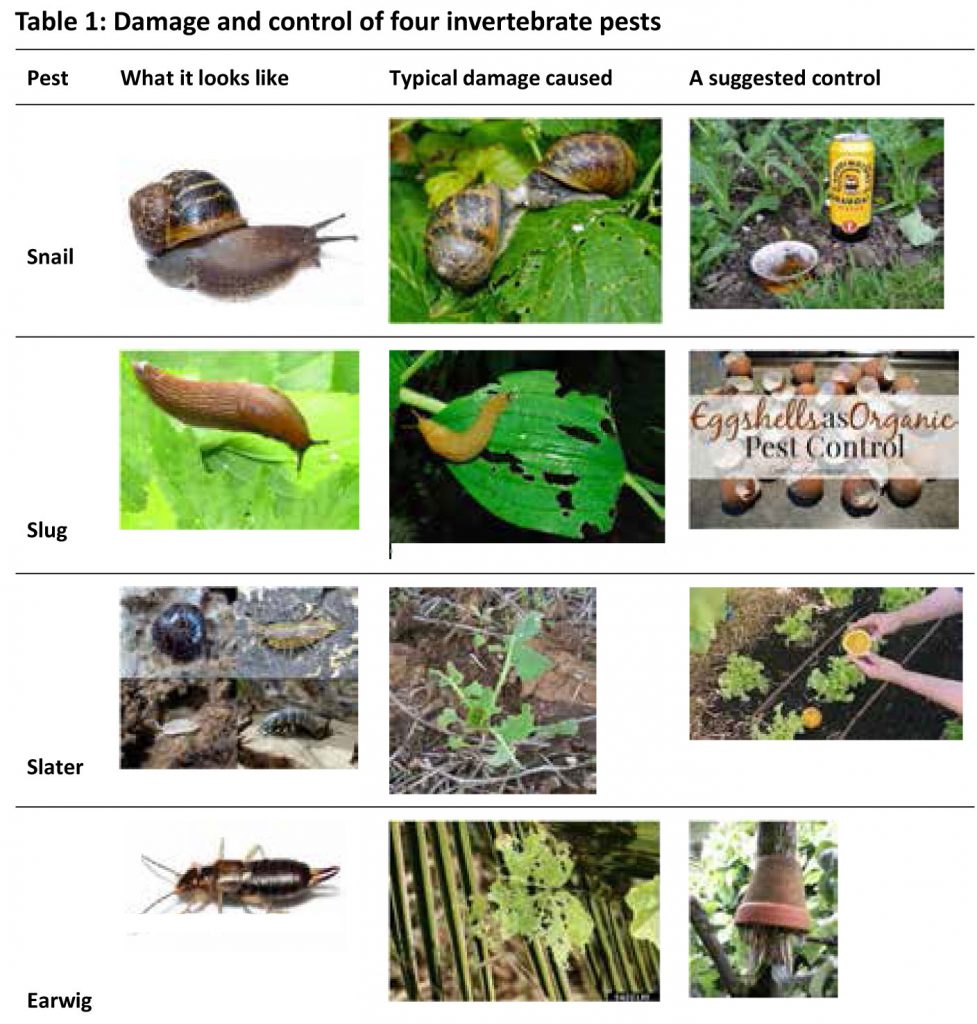Article & Photos: Teresa Rose (Canberra Organic – Summer 2020)
Plentiful rainfall during spring has favoured an increase in snail, slater, slug and, to a lesser extent, earwig populations. Some gardeners suggest that these invertebrates are in ‘pest’ proportions causing seedlings to disappear overnight. They often ask what techniques can be used to control them in organic gardens.
COGS’ advice is to use integrated pest management (cogs.asn.au/integrated-pestmanagement).
This requires identifying the pest you are dealing with and developing an understanding of its biology before trying to manage it using various control measures (see Tables 1 and 2), and also understanding what contribution they make to the ecosystem.

COGS does not allow chickens in its community gardens, so they cannot be used as a means of organic pest control.
COGS also does not encourage ‘organically acceptable sprays’ because they are still toxic, can disrupt the natural ecosystem in your plot and harm beneficial insects.
Some organic control measures (such as that shown in Photo 1) can also kill beneficial insects, so the method used must be monitored as to whether the benefits of killing the pests outweigh the loss of beneficial insects. The aim is to manage ‘pests’ not to eradicate them and to foster an ecosystem that is in balance. Feedback from productive gardeners suggests that plot hygiene is the best defence against pests.

Table 2: Characteristics and control of four invertebra
| Characteristics | Snail | Slug | Slater | Earwig |
| Group Class | Molluscs Gastropoda | Molluscs Gastropoda | Crustaceans Isopoda | Insects Dermaptera |
| Habit and habitat | No legs; cannot hear; does not like sunlight; leaves a slime trail; uses sense of smell to find food; stores food for winter; lives 2–3 years; can have up to 430 hatchlings. | No legs; has tentacles, blowholes and thousands of backward pointing teeth; lives 1–6 years; lays 20–100 eggs; leaves a slime trail; does not like thick foliage or strong smelling plants. | Seven pairs of legs; can roll into a ball; can live for 2–3 years; scavengers. Attracted to stressed plants; lives on damp ground surfaces, among fallen leaves and decaying logs, rock heaps, heaps of rotting vegetation, shady dark places and under objects like pot plants and bricks. | Attracted to stressed plants. Hides in confined areas such as rocks, bark, timber and under debris. If an earwig does not budge it is probably protecting its pale oval eggs beneath it. In summer they congregate in groups under plants, organic mulch or debris to shelter from the hot weather |
| Survival requirements | Needs to keep skin damp to breathe. | Needs to keep skin damp to breathe; needs water to generate a thick protective mucous to cover the body; sun will desiccate slugs. | Moist environment; does– not like venturing far from cover. | Needs shade. |
| Diet | Plants, fruits, leaves, vegetables, stems, bark, fungi. Dead or dying plants. Sand and soil for calcium to obtain thicker shell. | Any kind of vegetation but prefers tender leaves. Will eat decaying vegetables, fruits, leaves and fungi. | Eats dead or damaged plants, animal remains and other decaying organic matter. | Eats other small invertebrates. Shreds and eats dead or damaged plants. |
| Most active | At night; early morning when ground is wet; after rain. | At night when risk of dehydration is low; early morning when ground is wet; after rain. | At night. | At night; hides during the day in dark and moist spaces. |
| Contribution to the ecosystem | Vital food source for birds and mammals; eats harmful parasites from some plants; recycles organic matter into compost to build the soil. | Vital food source for birds, mammals, earthworms and insects; recycles organic matter into compost to build the soil. | Recycles organic matter into compost to build the soil. | Preys on aphids, slugs and snails |
| Predators | Earwigs, centipedes, rats, mice, beetles, possums, leopard slugs, lizards, birds, snakes, mammals. | Earwigs, beetles, rats, leopard slugs, lizards, snakes and possums. | Birds (magpies), centipedes, toads, spiders. | Frogs, birds |
| Control measures | Do not over water. Manual removal early morning; beer in jar lids; remove shade and wet conditions. Crushed egg shells; sharp grit. Plant strong smelling herbs. | Do not over water. Manual removal early morning. Crushed egg shells. Plant strong smelling herbs. | Don’t over water. Keep leaves and fruit off the ground; coffee grounds; sweet water traps with honey, sugar or fruit juice. Upturned melon skins, wet crumpled paper. Scooped out half of potato or orange; yoghurt, sour cream and boiling water trap. | Manual removal. Dry crumpled paper in upturned pots; loosely rolled newspaper. Remove mulch around plants; trays of oil with soy sauce. Remove eggs; remove breeding sites. Turn compost heap regularly. Beer baits. |
